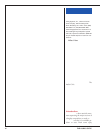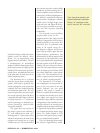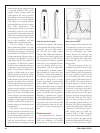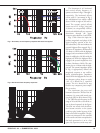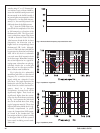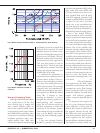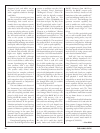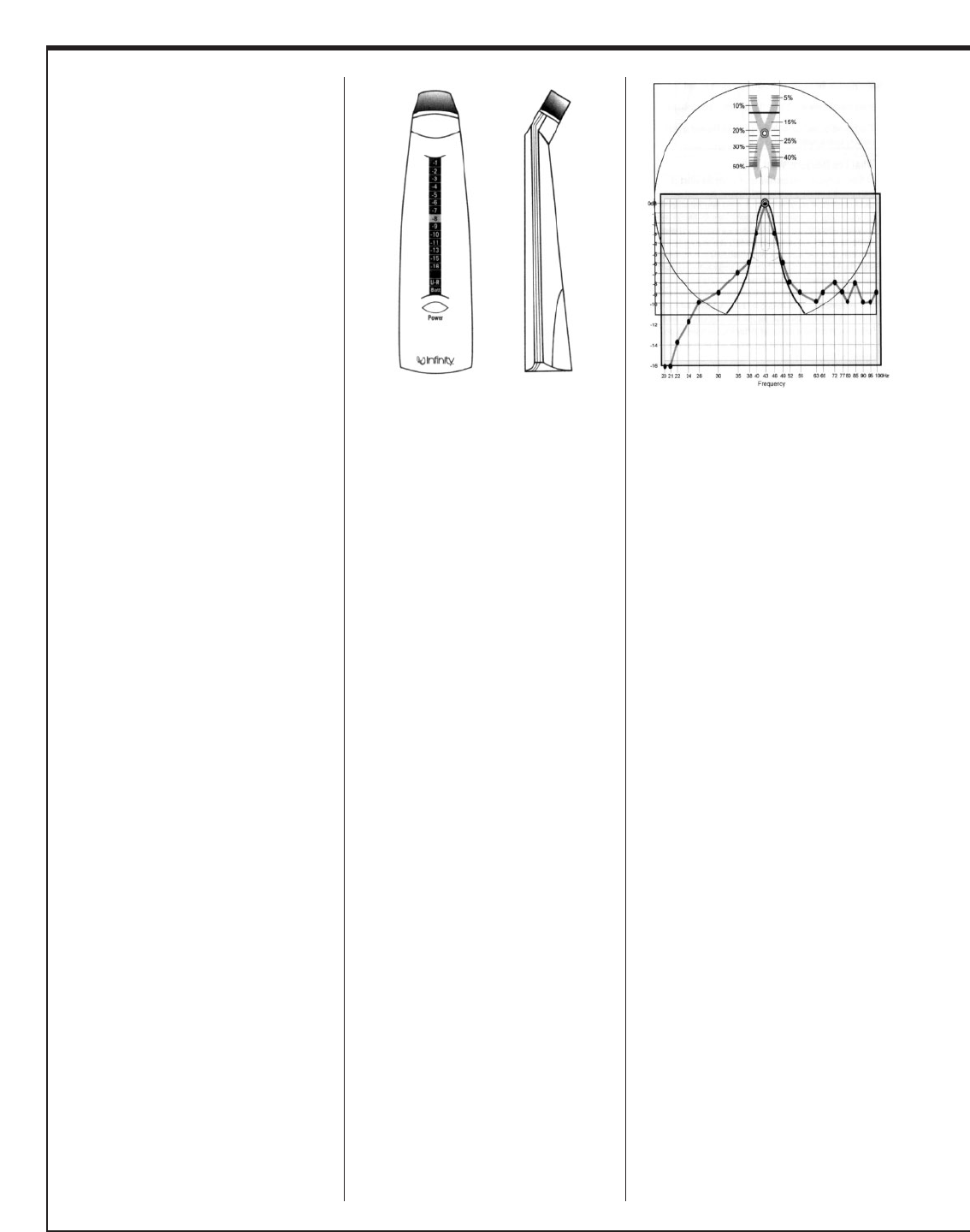
18 THE AUDIO CRITIC
mode tracking po
wer supply powering
a class-AB amplifier. The power
supply
’s output voltage tracks the
audio signal in such a way as to mini
-
miz
e output device power dissipation.
Quoting the 4.1t’s owners manual:
“The result is an extremely efficient
audio amplifier that does not compro-
mise audio performance.” The
tracking power supply is not unique
with Infinity, however; it first started
out primarily in the professional audio
field (Crown International and Carver
were among the first to offer the fea-
ture on their amplifiers) and then
trickled down to the home market.
The 4.1t includes a single para-
metric subwoofer equalizer in its bass
electronics, intended for smoothing
the subwoofer’s response in its listening
environment. As is well known, the lis-
tening room heavily influences what is
heard from a loudspeaker in the bass
range below 100 Hz. The equalizer, if
set properly, can effectively optimize
the Intermezzo’s subwoofer response to
complement most listening environ-
ments. The parametric equalizer can
provide a variable-width cut or dip of
arbitrary frequency and depth, which,
if matched to a room peak, can consid-
erably smooth out the system’s in-room
response. As pointed out by Infinity,
this also improves the system’s transient
r
esponse
because
the low-frequency
speaker-to-room response is essentially
minimum
phase.
(Techno-geek com-
ment: If a system is minimum phase
and its frequency response magnitude
is
equaliz
ed
flat
with
a
minimum-phase
equalizer, its phase response will follow
and also be equalized flat, and hence its
transient response or time behavior will
be optimized.)
This theory is all well and good,
but ho
w does the user know how to set
his equaliz
er for optimum r
esults? On
the one hand he/she could hire an ex-
pensiv
e acoustical engineer to come in
with his one-third-octave real-time
spectrum analyzer, noise generator, and
calibrated microphone, and properly
set the equalizer after doing some mea-
surements. Or, on the other hand—
tuh da!—the user could employ
Infinity’s slim LED sound level meter
(see Sound Level Meter graphic) and
the accompanying test CD with de-
tailed instructions, which are supplied
with the 4.1t to accomplish the same
task. Gee, Infinity thinks of every-
thing! Infinity calls their adjustment
system R.A.B.O.S. or Room Adaptive
Bass Optimization System (love that
acronym!). It comes with documenta-
tion and bass response graphs that the
user fills in, along with a circular
hinged clear-plastic protractor-like
gizmo, called a “Width Selector” by
Infinity, that allows the user to rapidly
determine the Q or r
esonance width of
the dominant peak in the system’s re-
sponse (see Width Selector graphic).
Matching a speaker/room response
peak by adjusting the parametric filter’s
notch depth and frequency is relatively
easy; ho
wever, this is not the case with
the Q adjustment. M
or
e on this sub-
ject later, in the use and listening sec-
tion.
Measurements
The I
nterme
zz
o 4.1t
’
s fr
equency
response was measured using two dif-
ferent test techniques: (1) nearfield
measurements to assess the low-fre-
quency response of the subwoofer, and
(2) windowed in-room tests to mea-
sure mid-to-high-frequency response.
The test microphone was aimed
halfway between the midrange and
tweeter at a distance of one meter with
2.83 V rms applied. One-tenth octave
smoothing was used in all the fol-
lowing curves.
The on-axis response of the 4.1t,
with grille on and off, is shown in Fig.
1, along with the response of the sub-
woofer. Without grille, the response of
the upper frequency portion of the
curve (excluding the sub) is very flat
and fits a tight 3-dB window from 95
Hz to 20 kHz. The woofer exhibits a
bandpass response centered on about
50 Hz and is 6 dB down at about 25
and 90 Hz. In the figure, the woofer’s
response has been level adjusted to
roughly match the level of the upper
frequency response. Averaged between
250 Hz and 4 kHz, the 4.1t’s 2.83 V
rms/1 m sensitivity came out to 86.2
dB, essentially equaling I
nfinity
’s 87
dB rating. The grille caused moderate
response aberrations above 4 kHz, with
a r
eduction in lev
el betw
een 3 and 11
kHz, a slight peak at 12.5 kHz, fol-
lo
w
ed b
y a dip at 17 kHz.
The grille
can be easily removed for serious lis-
tening if required. The right and left
systems were matched fairly closely, fit-
ting a
±1.5 dB window above 150 Hz.
R.A.B.O.S. Sound Level Meter
Width Selector Graphic



